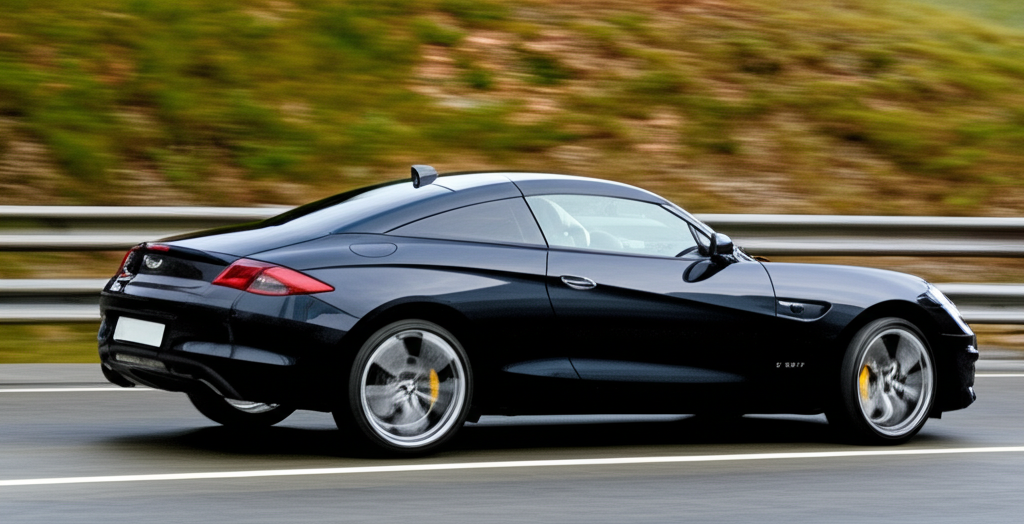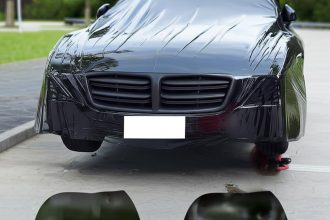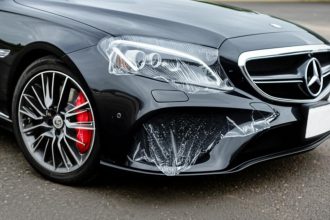Remember that incredible feeling? Driving your brand-new car off the dealership lot, the paint gleaming under the Thai sun, reflecting the vibrant Bangkok cityscape. It’s a moment of pure pride. But then, reality sets in. The chaotic traffic, the tight parking spots, the unpredictable debris flicked up from the roads, the relentless sun, and the occasional bird leaving its mark… Suddenly, maintaining that showroom shine feels like an uphill battle. Every commute becomes a source of anxiety. You find yourself parking further away, cringing at every close encounter with a motorbike, constantly worrying about that first inevitable scratch. Isn’t there a way to protect your investment and keep that ‘new car feeling’ alive for longer?
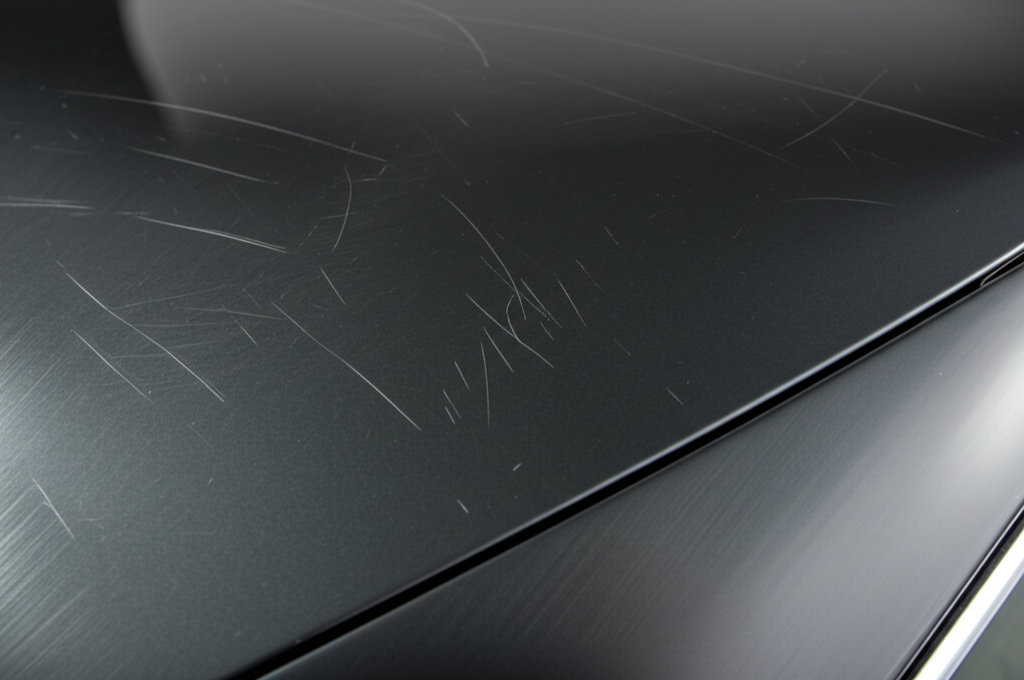
Khun Somchai, a marketing executive living in Sukhumvit, recently purchased his dream car – a sleek, deep blue BMW 5 Series. He loved everything about it, but the daily drive through Asoke’s notorious traffic jams and the challenge of finding safe parking near his office filled him with dread. “The paint was perfect,” Somchai recalls, “but I knew it wouldn’t stay that way for long in Bangkok. I’d see minor scuffs on colleagues’ cars, hear stories about parking lot mishaps, and worry constantly.”
He started researching ways to protect his investment. Waxing offered temporary shine, ceramic coatings promised gloss and some chemical resistance, but neither seemed robust enough to defend against the physical threats of daily driving in the city. That’s when he discovered Paint Protection Film (PPF), often called an ‘invisible car cover’. Intrigued by the promise of a durable, transparent layer that could absorb impacts from small stones, prevent scratches from keys or bags, and even self-heal minor abrasions, he decided to investigate further.
After consulting with a reputable automotive protection specialist in Bangkok, Somchai chose a high-quality, transparent PPF known for its clarity and longevity. The installation process was meticulous. The car was first thoroughly washed and decontaminated to ensure a perfectly clean surface. Then, skilled technicians carefully applied the pre-cut film sections to each panel – the hood, fenders, bumpers, side mirrors, doors – using a special solution and squeegees. They precisely wrapped the edges for maximum coverage and a near-invisible finish. The entire process took a couple of days, ensuring proper adhesion and curing.
The change wasn’t just physical; it was psychological. “Driving home after the PPF installation felt different,” Somchai shares. “The car looked exactly the same – still that stunning deep blue – but my anxiety was gone. Knowing there was a tough, invisible shield guarding the paint gave me incredible peace of mind.” Weeks later, caught in a sudden downpour behind a construction truck, he heard small debris hitting the front bumper. “Previously, I would have been stressed, imagining the chips. This time, I just shrugged it off. When I washed the car later, the paint underneath the film was flawless.” Somchai now navigates Bangkok’s challenges with confidence, his BMW looking as pristine as the day he bought it.
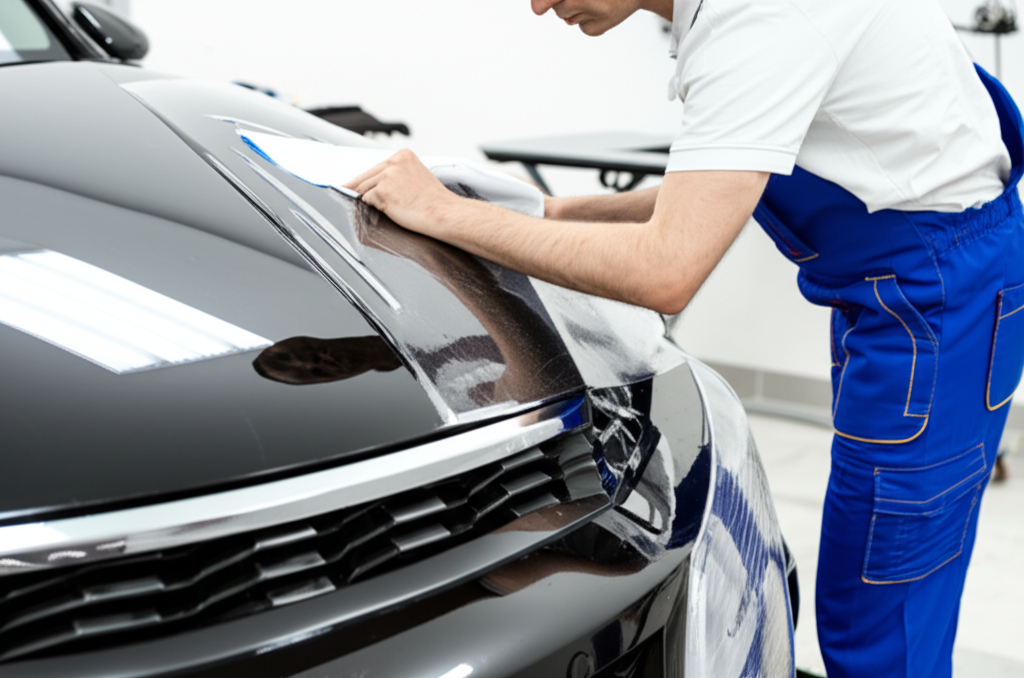
Choosing the right paint protection can be confusing. While PPF offers superior physical protection, other options like ceramic coatings and traditional waxes/sealants have their own merits. Understanding the differences helps you make an informed decision based on your needs, budget, and driving habits in Thailand.
Paint Protection Film (PPF): This is a thick (typically 6-10 mils), transparent or coloured urethane film applied directly to the vehicle’s paintwork. Its primary function is to provide a physical barrier against mechanical damage.
- Pros: Best protection against scratches, rock chips, minor abrasions, bug splatter, bird droppings, and environmental contaminants. Many high-quality films have self-healing properties (minor scratches disappear with heat). Long lifespan. Preserves original paint perfectly.
- Cons: Highest upfront cost. Installation requires professional expertise. Lower quality films might yellow over time (though modern top-tier films resist this).
Ceramic Coating: A liquid polymer applied to the exterior surfaces. It chemically bonds with the factory paint, creating a semi-permanent layer of protection.
- Pros: Excellent hydrophobic properties (water beads off easily), making washing easier. Enhanced gloss and depth of shine. Good resistance to chemical stains, UV damage, and oxidation. More durable than wax/sealants.
- Cons: Offers minimal protection against rock chips and deeper scratches (it’s a hard layer, but thin). Requires proper maintenance washes. Professional application recommended for best results. Moderate cost.
Wax / Sealant: The most traditional form of paint protection. Waxes are often natural (like Carnauba), while sealants are synthetic polymers. They provide a temporary sacrificial layer.
- Pros: Easiest to apply (DIY friendly). Lowest cost. Provides good initial gloss and water beading.
- Cons: Least durable (lasts weeks to a few months). Offers minimal protection against scratches, chips, or strong chemicals. Requires frequent reapplication.
Here’s a comparison table to summarize the key differences:
| Feature | Paint Protection Film (PPF) | Ceramic Coating | Wax / Sealant |
|---|---|---|---|
| Primary Protection | Physical Impact & Scratch Resistance (Rock chips, scratches, scuffs) | Chemical Resistance & Gloss (UV rays, acid rain, bird droppings, ease of cleaning) | Basic Shine & Water Beading (Minimal protection) |
| Material | Thermoplastic Urethane Film | Liquid Polymer (SiO2 or SiC based) | Natural Wax or Synthetic Polymer |
| Durability / Lifespan | 5-10+ years (High Quality) | 2-7+ years (Depending on product & maintenance) | Weeks to 3-6 months |
| Self-Healing Properties | Yes (Most premium films, for light scratches/swirls) | No | No |
| Thickness | ~6-10 mils (150-250 microns) | ~2-5 microns | <1 micron |
| Ease of Application | Professional Installation Required | Professional Recommended (DIY possible but tricky) | Easy (DIY) |
| Maintenance | Regular washing, avoid pressure washing edges | pH-neutral washes, occasional topper/booster recommended | Frequent reapplication needed |
| Typical Cost (Thailand – indicative) | ฿฿฿฿ – ฿฿฿฿฿ (Highest) | ฿฿฿ – ฿฿฿฿ (Moderate) | ฿ – ฿฿ (Lowest) |
| Best Suited For | New cars, luxury/performance vehicles, drivers wanting maximum physical protection, long-term ownership, high-traffic/risk areas (like Bangkok). | Owners seeking enhanced gloss, easier maintenance, and good chemical/UV protection. Often combined with PPF on high-impact areas. | Budget-conscious owners, enthusiasts who enjoy frequent detailing, short-term protection. |
The true value of PPF often lies in the intangible benefit: freedom from worry. Here’s what other car owners in Thailand are saying:
“I used to be so nervous parking my new Civic anywhere in the city. Every time I returned, I’d scan the doors for dings. After getting PPF on the front end and doors, that stress just melted away. It’s been a year, and the paint looks immaculate despite the daily grind. Best money I’ve spent on the car!” – Anya, Sathorn Office Worker
“Living near the coast in Pattaya, the salt air and sand can be harsh on paint. Plus, gravel roads are common. I put PPF on my Fortuner right after buying it. Recently, a large stone kicked up and hit the hood hard – I saw it happen. I was sure it left a nasty chip, but when I checked later, there was just a tiny mark on the film itself. The paint underneath? Perfect. Huge relief!” – Pravit, Business Owner in Pattaya
“For my Porsche, PPF wasn’t even a question, it was a necessity. It protects the expensive paint job from track day debris and everyday hazards. Knowing the original paint is preserved also helps maintain its resale value significantly. It’s an investment that pays for itself in the long run, both in peace of mind and potential return.” – Chai, Performance Car Enthusiast, Bangkok
These experiences highlight a common theme: PPF transforms car ownership from a state of constant vigilance to one of confident enjoyment.
If you cherish your car’s appearance and want to shield it from the inevitable hazards of driving in Thailand, Paint Protection Film is arguably the most effective solution available. It’s more than just a protective layer; it’s an investment in maintaining your vehicle’s value and your own peace of mind. Stop worrying about scratches and chips, and start enjoying your drive with confidence.
Interested in learning more about how PPF can benefit your specific vehicle? Get in touch with professionals who can assess your needs and provide expert advice and installation.
📱 Want to learn more about car wrap & paint protection?
Feel free to reach us on LINE:

🌐 Official Website: https://tpuwraps.com
- Q: How long does high-quality Paint Protection Film typically last in Thailand’s climate?
- A: Reputable PPF brands installed professionally can last anywhere from 5 to 10 years, or even longer. Durability depends on the film quality, UV exposure (Thailand’s sun is intense), how well the car is maintained (regular washing), and driving conditions. Most top-tier films come with warranties against yellowing, cracking, or peeling.
- Q: Will PPF change the appearance of my car’s paint?
- A: High-quality PPF is designed to be optically clear and virtually invisible once installed. It typically enhances the gloss of the underlying paint. Lower quality films might have a slight texture (“orange peel”) or could potentially yellow over time, which is why choosing a premium brand and installer is crucial.
- Q: Can PPF be applied to only certain parts of the car?
- A: Absolutely. Many owners choose partial protection for high-impact zones. Common packages include: ‘Front Bumper’, ‘Partial Front’ (bumper, partial hood, partial fenders, mirrors), ‘Full Front’ (bumper, full hood, full fenders, mirrors), or ‘Full Car’ coverage. This allows you to tailor the protection level to your budget and needs.
- Q: Is PPF difficult to maintain? How do I wash my car with PPF?
- A: Maintaining a car with PPF is generally easy. Regular washing using standard car wash soaps (pH-neutral recommended) is fine. Hand washing is ideal. Avoid using high-pressure washers directly on the film edges. Bug splatter and bird droppings should be cleaned off promptly, just as with regular paint. Some PPFs also benefit from specific aftercare sprays or sealants designed for film.
- Q: Is PPF removable, and will it damage my car’s original paint upon removal?
- A: Yes, professional-grade PPF is designed to be removable without damaging the underlying factory paint, provided the paint was in good condition before application (original factory paint is best). Removal should ideally be done by a professional installer, who will use heat and proper techniques to ensure the film comes off cleanly, leaving the original paint intact.
Your car is more than just transport; it’s often a reflection of your personality, a reward for your hard work, and a significant financial investment. Protecting its paintwork with PPF is one of the smartest decisions you can make, especially in the challenging driving environment of Thailand. It shields your car from the daily onslaught of scratches, chips, and environmental damage, ensuring it looks its best for years to come. This not only enhances your driving pleasure but also helps maintain the vehicle’s resale value.
Don’t let the fear of damage diminish your enjoyment of your vehicle. Explore the benefits of Paint Protection Film today and give your car the invisible armour it deserves. Drive confidently, knowing your paint is protected.
